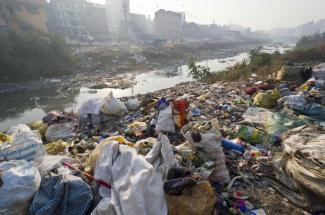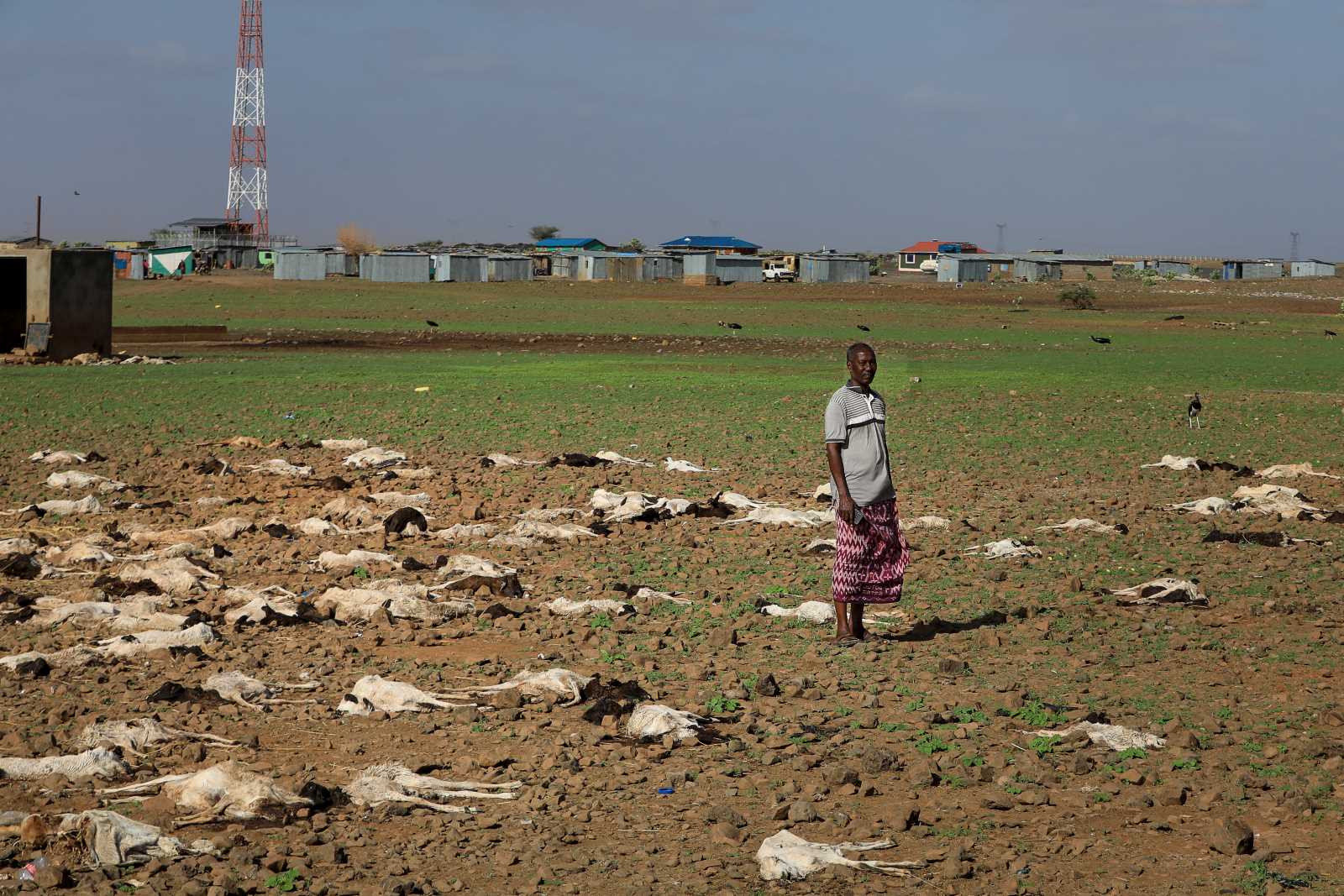Waste management
Living amidst filth

Kathmandu’s open spaces, roads, sidewalks and waterways are littered with waste. People dump their garbage in public places because no proper waste-management system is in place. Things become worse in the monsoon when solid waste clogs the sewage system and the drainage canals, causing flooding all over the city.
According to the Central Bureau of Statistics, Kathmandu Metropolitan City had a population of about 1.7 million in 2013. The city is very crowded. Resources are scarce, and the pressure on infrastructure is huge. The local government cannot provide all services it should. This includes waste management. Political unrest in decades and the earthquake in April 2015 has worsened the situation. People worry about daily survival and subsistence, not garbage, hygiene and sanitation.
In the past, the people were responsible for their waste. Households composted organic waste in piles. Plastic was hardly used, and plastic items were reused and recycled. As the population grew and economic development set in from the 1960s on, the waste quantities started to rise. Currently, around 450 metric tons of solid waste is generated in Kathmandu every day, but there is no waste management. It became common to dump garbage in the river and elsewhere.
In 1971, Germany’s GTZ (which has since become GIZ) provided assistance to start a landfill in Gokarna. It became operational in 1986. For 14 years, it was repeatedly closed and reopened, until it was permanently shut down in the year 2000. Since then, Kathmandu Metropolitan City Office (KMC) has installed several landfills in and around the city but they tend to be temporary and informal.
From 1994 to 2000, the KMC used the western banks of the Bishnumati and Bagmati Rivers. The garbage dump along the Bishnumati River had to be closed, however, because it attracted birds that posed risks to airplanes taking off from the nearby airport. Later, an area near the confluence of the two rivers was used, but in view of protests and environmental concerns, it too was shut down in 2005.
Plans for new landfills always face strong public opposition (see box). People want hospitals, schools and better roads, and they want their homes to be linked to the water pipes and the power grid. They don’t want a landfill in their vicinity.
Dead rivers
Improper waste disposal has left the Bagmati River aesthetically destroyed and biologically dead. There is virtually no aquatic biodiversity in the river and only some patchy riparian vegetation. Consequently, the attractiveness of traditional monuments along the river and its tributaries has been eroded. Nepal’s economy depends on tourism, so the country cannot afford to neglect cultural heritage this way. However, all river banks have become informal dumping sites.
Since 2005, the authorities have been using a temporary landfill in the neighbouring district of Nuwakot. Its capacity is too small, so adjacent areas have been used too. Moreover, there have been disputes over the main site. As a result, the rivers suffer. There is currently only one waste collection and treatment centre. Unfortunately, it is too small too.
Waste is increasingly becoming a public health concern in the densely populated capital. Land, water and food are contaminated. The garbage piles stink. Frequent waste fires pollute the air. The urban poor in particular are exposed to health hazards, not least as waste has an impact on water supply. Many public taps are near waste disposal sites, so there are risks of water-borne diseases. Moreover, clogged drains create small ponds where mosquitos and other disease vectors breed.
As in many major cities of developing countries, waste issues have never been managed well in Kathmandu. Even the Gokarna landfill was never up to task and caused public outrage soon after inception. Neither the national government nor the local authorities have been able to rise to the challenges.
Inadequate urban planning is indeed a huge challenge. Many roads are too narrow for garbage trucks. The agglomeration’s crowded neighbourhoods do not have enough space for refuse containers, and certainly not for composting. Because the infrastructure is poor, solid waste collection is difficult and disposal services remain insufficient.
The urban public shows little interest in garbage matters. It is not a common practice to separate degradable from non-degradable household waste. It seems easier to simply dump waste somewhere – or to burn it.
Caste plays a role too. Municipal garbage collectors traditionally belonged to marginalised Dalit communities. In the informal sector, street children and kabbadis (scavengers) are busy collecting and sorting waste items. Most Nepalis believe that managing garbage cannot be honourable work. The bitter irony of this attitude is that inadequate waste management means that everyone in the city lives amidst filth. All summed up, it is no surprise that Nepal’s Solid Waste Management Act of 2011 is not stringently enforced.
The way forward
To improve matters, Kathmandu urgently needs proper and formal landfills. Local policymakers must negotiate with local communities and ensure that the people who live near future landfills are well compensated and the landfill itself is well managed. For instance, schools or health facilities could be prioritised in the neighbourhoods concerned. The government could rely on various environmental and climate funds or aid agencies in general for investing in landfill management.
Moreover, Kathmandu needs a paradigm shift to a holistic approach of Integrated Solid Waste Management (ISWM). Environmental effectiveness and social acceptance matter as much as economic feasibility. Apart from waste disposal, relevant issues include the prevention, reduction and recycling of garbage. Behaviour change is needed both at the level of households and industries. Organic, plastic and paper waste needs to be separated so the best use can be made of it. People must learn to see waste as a resource rather than a nuisance.
The challenges are considerable, but policymakers can make a difference. It would also help if they used incentives. In Germany, for example, consumers get a refund when they return plastic bottles and aluminium cans to retailers. Moreover, a system to separate waste and recycle its components was set up in the 1990s.
Roshan Sharma is a professional of natural resources management from Nepal. He is currently studying in a post-graduate course at the Technical University of Cologne.
roseanstore@hotmail.com












